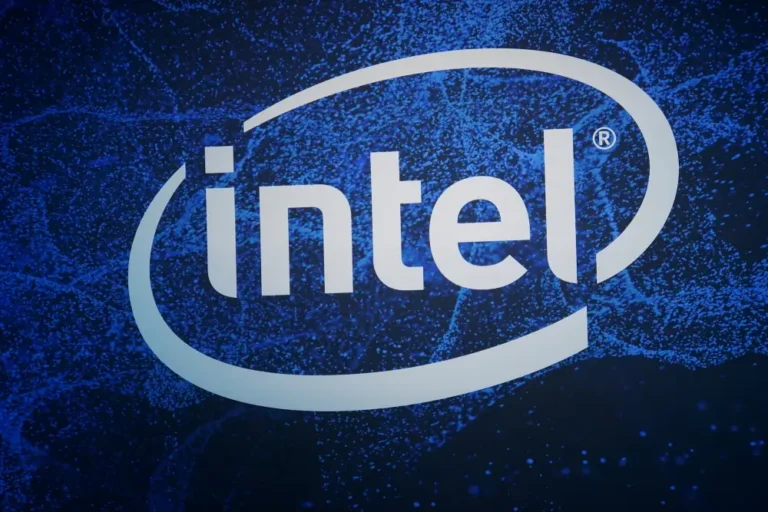VCs say digital agents, ‘crypto mania,’ and a torrent of liquidity are the tech trends to watch in 2025

After three years of tense reductions, the skies are clearing over Silicon Valley, and startup investors seem broadly optimistic about a resurgence in tech dealmaking.
We asked venture capitalists at 35 firms like Andreessen Horowitz, Insight Partners, IVP, and Sapphire Ventures, to tell us what’s hot and what’s not in tech next year, how potential regulatory changes could rouse a sleepy exit market, and where artificial intelligence goes from here.
In 2025, venture capitalists expect a loosening of antitrust regulations under the new presidential administration. This could reignite acquisition activity by strategic buyers, which would allow funds to distribute proceeds from those deals to their own investors, or limited partners, and raise new funds to invest in the next generation of startups, said Brian Garrett, managing director at Crosscut Ventures.
In recent years, startups weren’t the only ones facing a cash crunch. Established funds raised the lion’s share of funding dollars, while many newish and boutique funds struggled to raise. A torrent of dealmaking, combined with Trump’s return to the White House and an end to the political uncertainty, could mobilize investors in these funds who had been sitting on the sidelines to whip out their checkbooks, said Ivan Nikkhoo, a managing partner at Navigate Ventures.
“Uncertainty breeds defense, optimism breeds offense,” said Matt Murphy, a partner at Menlo Ventures and early Anthropic investor. “We’re going into a cycle where acquirers are feeling they need to play offense and startups feel like it’s time to invest in leadership. And the IPO market is open for best-in-class assets.”
From IPOs to robotaxis, these are the tech trends to watch in 2025, according to venture capitalists.
Infrastructure cools off, apps soar

Young people can feel pressured to keep up with every fashion trend they see on social media.
Jai Das, president and partner at Sapphire Ventures: “A larger number of ‘application layer’ companies will have a breakout year with several crossing $100 million in revenues. I predict 50 companies will cross $50 million ARR while still growing 60%+, and at least 10 will hit $100 million ARR. A lot of these companies will be prosumer companies, but there will be several business application companies as well.”
Ben Lerer, managing partner at Lerer Hippeau: “When you get the cost of compute going down as quickly as it has, and the number of options in terms of foundational models growing as it has, you end up with a really interesting time for the application layer to thrive. If you’re a startup, you can go with the flavor of the month — not just a ChatGPT wrapper, or a Claude wrapper, or a Gemini wrapper, or you name it — but some combination of all of them to optimize functionality, results, and the cost of those results.”
Lower rates kick the IPO market into gear

Sofia Dolfe, partner at Index Ventures: “2025 is the year we will see the IPO market opening back up. There are already signs that this is on the horizon: we’re seeing gradual recovery, rates have started to come down, and there are many later-stage companies with the financial profiles to go public.”
Michael Yang, senior managing partner at Omers: “Two kinds of companies will go public as the IPO window opens back up next year. First, the truly great businesses that are really scaled and have forecastable growth and would’ve gone public earlier if the IPO market was more favorable, and second, companies that entered into structured financings with dirtier terms that need to go public for timing reasons.”
Nima Wedlake, managing director at Thomvest Ventures: “The IPO market will remain closed for most tech companies, with a high bar for entry — $300 million-plus ARR, fast growth, and cash-flow breakeven or better.”
As crypto prices surge, founders return to the drawing table

Nihal Mehta, general partner at Eniac: “Guidance on what the regulations could be for crypto and AI would encourage founders to build productively within those areas.”
Jai Das, president and partner at Sapphire Ventures: “The new administration is crypto-friendly, bringing with it an expected acceleration of crypto-based business models (especially those using stablecoins). I predict we’ll have another crypto mania in 2025.”
Some venture funds go belly-up

Wesley Chan, cofounder and managing partner at FPV Ventures: “In 2025, I predict a lot of contraction for VCs, except for top funds. We’re still in a downturn. Some firms shut down, a lot of firms are not doing new deals, and you will see a lot of junior-mid level employees leave.”
The great funding bifurcation continues

Molly Alter, partner at Northzone: “The ‘sexiest’ deals will continue to raise at sky-high valuations, but for the rest of the pack, companies will need to show very specific metrics to command a strong valuation. There will be a great bifurcation into the ‘haves’ and the ‘have-nots.'”
Don Butler, managing director at Thomvest Ventures: “Startup shutdowns will increase, particularly at the seed stage, as companies run out of cash. This will influence valuations, with investors likely focusing on startups that have shown resilience or achieved meaningful milestones.”
Matt Murphy, partner at Menlo Ventures: “Valuations will rise as growth rates and market multiples recover, but many companies still might not grow back into their ZIRP valuations. People are over that and won’t let it get in the way of pursuing opportunity. Valuations for GenAI companies will continue to be outliers based on any historical metrics.”
Robotaxis cover new terrain

Brian Walsh, head of Wind Ventures: “2025 will be the year that we enter the age of ‘robo taxis’ with, first, Waymo now well along its adoption S-curve in San Francisco and expanding quickly, and, second, Tesla favorably positioned with quickly maturing best-in-class autonomy technology (no human in the loop) and an existing large fleet to scale it.”
Kasper Sage, managing partner at BMW i Ventures: “Autonomous fleet deployments will gain traction in controlled, high-density environments such as for applications like campus environments and logistics for heavy industries.”
Trump policy heralds return of megadeals

Mark Zuckerberg.
Aaron Jacobson, partner at NEA: “With the change of administration, I expect the return of mega M&A deals. We are going to see a ‘WhatsApp’ like $20 billion-plus M&A outcome for a leading AI company.”
Michael Yang, senior managing partner at Omers: “Big Tech will be back at the M&A table with a new administration and regulatory regime in place. They’ve been quieter in recent times but should be chomping at the bit to capitalize on what is still a buyer’s market.”
Funding rounds become even more fluid

Sasha McKenzie and Van Jones, both deal leads at Wellington Access Ventures at Wellington Management: “The concept of letter rounds in VC is becoming more amorphous. We’re seeing $30 million and $100 million seed rounds, raising questions about what seed even means anymore. The model is shifting towards evaluating how quickly founders can run and how disciplined they are with results, rather than hitting historically stated milestones (e.g., $1 million in revenue to raise a Series A). There will be more nuance in how VCs evaluate progress, focusing more on the operator and their ability to balance vision with execution, based on the capital they have.”
Multi-agent systems take center stage

Aaron Jacobson, partner at NEA: “Chatbots are overhyped. Agents are under-hyped. Enterprises will move beyond the low-hanging fruit of ‘GPT-wrappers’ to deploy digital workers that can reason and take action to make a real business impact.”
Praveen Akkiraju, managing director at Insight Partners: “If 2024 was the year of LLMs, we believe 2025 will be the year of agentic AI — where highly capable state-of-the-art reasoning LLMs are combined with orchestration frameworks like memory, tool calling, and user-in-the-loop processes to build AI agents that can address progressively complex business workflows.”
Seema Amble, partner at Andreessen Horowitz: “In the short term, human workers will be the reviewer in the loop; in the future, as trust is established over time, I expect many data-derived actions will shift toward being entirely a set of narrowly defined task-driven agents.”
S. Somasegar, managing director at Madrona: “The world where we each have a digital assistant that works with a collection of AI agents is probably five to ten years out. But having AI agents that can do specific tasks really, really well is happening sooner and I think we will see a ton of progress on this in 2025.”
Tender offers grow for a selective group of companies

Ravi Viswanathan, founder and managing partner at NewView Capital: “The venture secondaries market will continue to be an important source of liquidity — a trend we think is here to stay due to structural dynamics of the venture asset class.”
Simon Wu, partner at Cathay Innovation: “The size of tender offers has grown from millions to billions as the desire to own top-performing names by mutual funds and VCs increases, thus allowing some of the best names to stay private longer. Tenders are likely to get bigger to a selective group of companies in tandem with a more active IPO market next year.”
Industry-specific software takes over

Mark Bordo works alongside his dog Riley at Vetster, an online platform to connect people with vets
Molly Alter, partner at Northzone: “Vertical SaaS will become more highly valued than ever, due to the increasing difficulty of differentiating a product in horizontal categories.”
Cathy Gao, partner at Sapphire Ventures: “Vertical software will evolve rapidly as AI moves to the agentic phase, enabling end-to-end automation of complex, industry-specific workflows that were once beyond the reach of software. By pairing deep domain expertise with intelligent automation, vertical AI will unlock new use cases, deliver outsized ROI, and become table stakes for staying competitive.”
Fintech roars back

Alexa von Tobel, managing partner at Inspired Capital: “Given the new political climate, we, of course, expect to see less regulation across the board. I think we’ll see acceleration in a few core categories, including fintech.”
Marlon Nichols, managing partner at MaC Venture Capital: “Fintech is an area I’m excited to invest in, particularly fintech startups leveraging AI to create transformative personal finance tools.”
Sydney Thomas, general partner at Symphonic Capital: “We are watching the regulatory environment towards fintech ease which has enabled massive speculation on what asset class will win. … This also means, many startups will be required to regulate themselves, which isn’t always an easy thing to do.”
Robots join society

Claire Yun, investor at Piva Capital: “Generative AI will continue to accelerate and supercharge robotics; simultaneously, we will see a choke point in human labor as an aging domestic workforce and protectionist policies create a sharp supply and demand imbalance. The result will be a colorful Cambrian explosion of robots as they step in to fill this gap.”
Bob Ma, partner at Wind Ventures: “Urban areas will have fleets of robots on sidewalks, while drones will manage suburban and rural deliveries. Enhanced speed, cost-efficiency, and sustainability will redefine retail and e-commerce, with regulations supporting wider adoption and innovation.”
Yuri Lee, partner at IVP: “As AI advances enable robots to move from structured, repetitive tasks to more complex and dynamic real-world applications, we’ll see rapid progress in robotic perception, manipulation, and decision-making capabilities.”
Small language models rise in popularity

Microsoft CEO Satya Nadella.
Tasneem Dohadwala, partner at Excelestar Ventures: “Small language domain-specific models are starting to show more value. Instead of using vast swaths of the internet to train large models, these smaller models can be trained on specific datasets, such as medical journals, newspapers, or email collections. As a result, they are highly tailored and more accurate in reflecting a user’s particular constraints and voice.
Michael Yang, senior managing partner at Omers: “If 2024 was the year of the LLMs, 2025 will be the year of small language models (SLMs) and proprietary data sets spawning the next generation of enterprise SaaS applications. Companies have realized that data in their midst can be harnessed in new and better ways than the ‘structured workflow apps’ of old and by leveraging targeted SLMs, they can do work differently, more efficiently.”
Founders flock to private equity

Thoma Bravo founder and managing partner Orlando Bravo.
Brad Bernstein, managing partner at FTB Capital: “Despite the IPO market showing better performance in Q3’24 with proceeds already surpassing 2023 totals, structural issues like regulatory burdens and governance challenges still pose obstacles for small and mid-cap companies. Private equity markets are stepping in to fill the gap, with growth equity deals comprising a larger share of activity and providing opportunities for startups in high-growth sectors like insurtech and healthcare tech.”
Jai Das, president and partner at Sapphire Partners: “With the new administration, I predict we will see an uptick in exits, and much more tech M&A activity. We’ll also see PE firms buying up a lot of companies once boards and management teams realize these businesses won’t be able to grow at 30% at scale and ultimately, IPO.”
Open-source foundation models come for OpenAI and xAI’s lunch

Elon Musk and Sam Altman
Aaron Jacobson, partner at NEA: “Open-source foundation models will close the gap with the leading proprietary models. On top of this we will see a significant shift away from pre-training models from scratch to fine tuning OSS models and distilling them to smaller models for faster performance.”
Mo Jomaa, partner at CapitalG: “I predict that in 2025 we will continue to see open source technologies consume the infrastructure layer in software. We have seen this trend play out in several categories already, including data and analytics (which led to our investment in Databricks) and observability (which drove our investment in Grafana). Enterprises will continue to adopt open source because it helps them save money, avoid vendor lock-in, and shape the product roadmaps of the technologies that they procure.”
Record deals and dollars flow to cyber and national security

Wiz cofounder and CEO Assaf Rappaport.
Andrew Schoen, partner at NEA: “We will see a surge of investment into technologies critical to restarting the US industrial base and enhancing national security. A record number of deals and dollars will go into AI, automation, cybersecurity, and frontier technology serving manufacturing, supply chain, and defense markets.”
Jake Seid, general partner at Ballistic Ventures: “Over the next 18 months, we’re going to see a lot more cybersecurity exits. While this may include an uptick in M&A activity, I expect we’ll see cybersecurity companies go public in 2025 and in the first half of 2026 given how large the market for cyber products has become.”
Trump’s tech advisors bend his ear

Trump’s AI and crypto Czar David Sacks.
Samir Kumar, general partner at Touring Capital: “We should expect a lot less regulatory headwinds in 2025 for AI given David Sacks will be the AI and crypto czar for the new administration. This is likely to even result in the repeal of President Biden’s executive order on AI.”
Francesco Ricciuti, associate at Runa Capital: “In the US, Trump is bringing prominent people from the startup and VC world in the government, and I wouldn’t be surprised if the regulatory landscape will evolve towards entrepreneurship and technology.”






